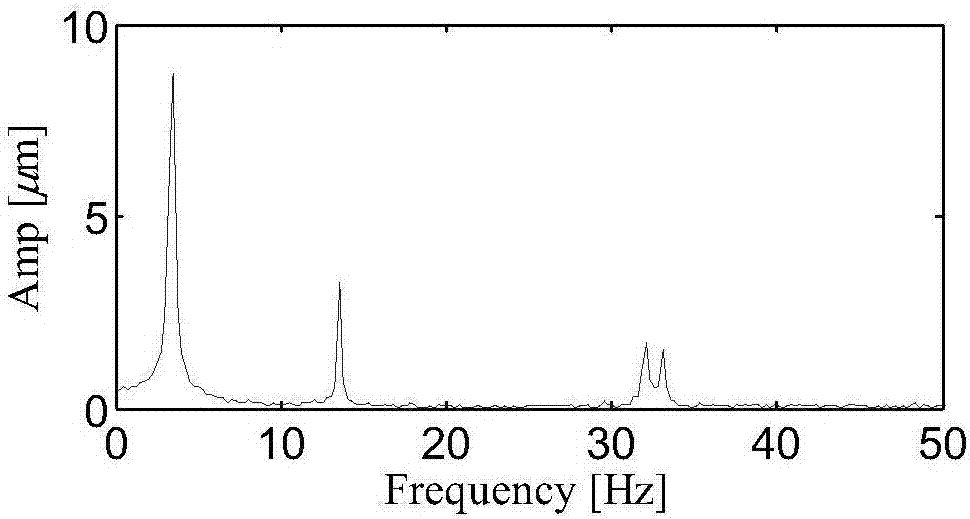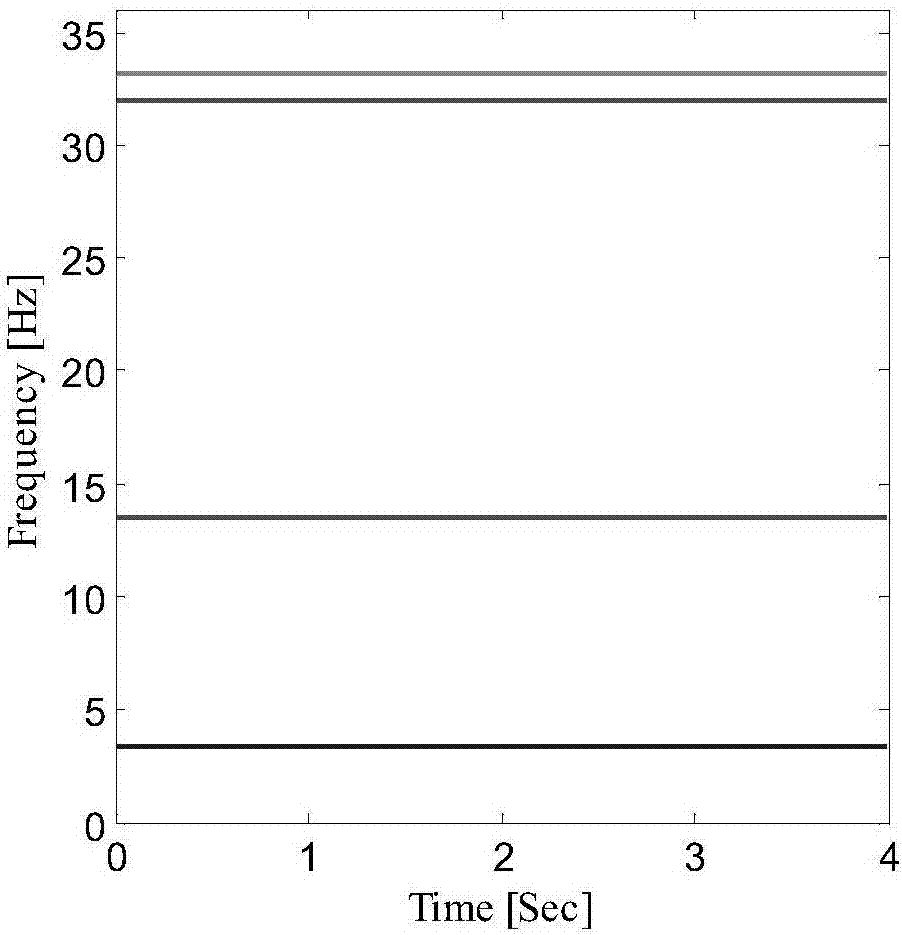Nonlinear frequency modulation component decomposition-based time-frequency domain modal parameter identification method
A nonlinear frequency modulation, modal parameter technology, applied in complex mathematical operations, electrical digital data processing, special data processing applications, etc., can solve the problems of noise sensitivity, unreliable parameter identification results, poor identification results, etc., to achieve strong application performance and anti-interference ability, improve the modal parameter identification effect, and the effect of simple and convenient use
- Summary
- Abstract
- Description
- Claims
- Application Information
AI Technical Summary
Problems solved by technology
Method used
Image
Examples
Embodiment 1
[0067] The specific implementation steps of a time-frequency domain modal parameter identification method based on nonlinear frequency modulation component decomposition of the present invention are as follows:
[0068] Step 1, select as image 3 The displacement response time domain waveform of the first degree of freedom shown is the dynamic response signal of the structure to be identified, and the sampling time is set to 4s, and the sampling frequency is 100Hz. pass image 3 The time-domain waveform, frequency spectrum and time-frequency distribution of the displacement response of the first degree of freedom shown in the system can be found that the modal frequencies of the system are located near 3, 13, 32 and 33Hz, which indicates that the third-order modal frequency and The fourth-order modal frequency is the dense mode frequency.
[0069] In step 2, a redundant Fourier model of the response signal, instantaneous frequency and instantaneous amplitude is established t...
PUM
 Login to View More
Login to View More Abstract
Description
Claims
Application Information
 Login to View More
Login to View More - R&D
- Intellectual Property
- Life Sciences
- Materials
- Tech Scout
- Unparalleled Data Quality
- Higher Quality Content
- 60% Fewer Hallucinations
Browse by: Latest US Patents, China's latest patents, Technical Efficacy Thesaurus, Application Domain, Technology Topic, Popular Technical Reports.
© 2025 PatSnap. All rights reserved.Legal|Privacy policy|Modern Slavery Act Transparency Statement|Sitemap|About US| Contact US: help@patsnap.com



